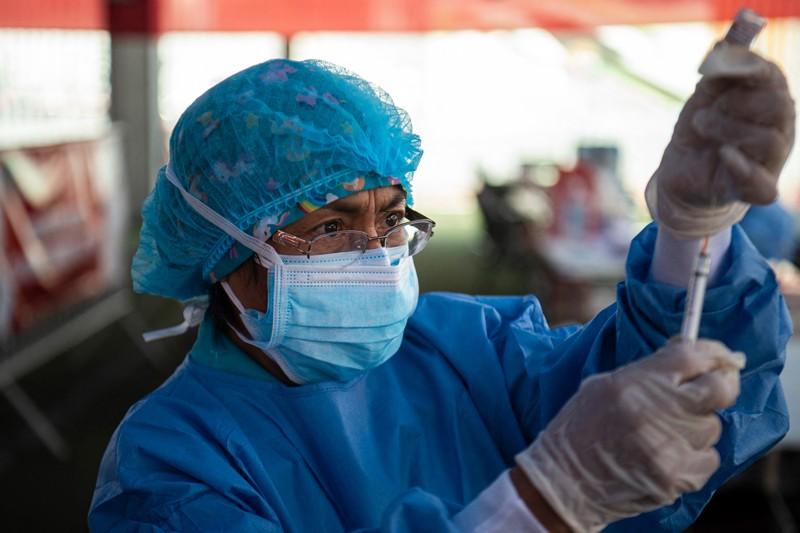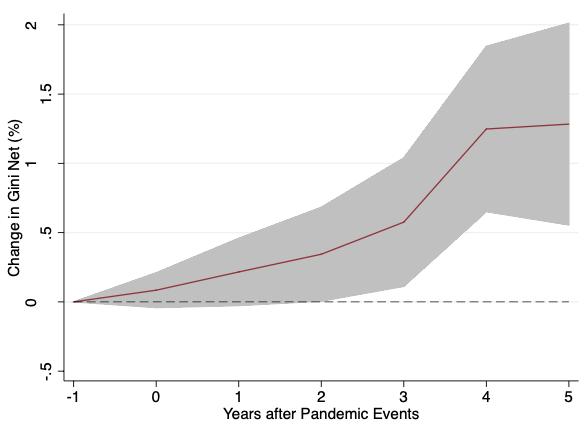After the Omicron variant of SARS-CoV-2 was first identified in November, vaccine makers quickly began developing shots against the highly mutated and transmissible virus. This week, pharmaceutical firm Pfizer and biotechnology company Moderna both announced that they had initiated clinical trials in which they are dosing people with Omicron-based vaccines. But whether rolling out these jabs is necessary, or even practical, is unclear, according to public-health authorities and infectious-disease specialists interviewed by Nature.
For those faced with making the complicated decision, debates have begun. Some think it might not be worthwhile because Omicron cases could plummet before manufacturers can finalize the vaccines. Others point out that it’s difficult to predict whether the next SARS-CoV-2 variant will be like Omicron, calling into question the utility of an Omicron-specific shot. “We have a lot of confidence in the [current] vaccines, but we must now discuss whether to update the composition,” says Kanta Subbarao, who chairs the Technical Advisory Group on COVID-19 Vaccine Composition for the World Health Organization (WHO).
Omicron thwarts some of the world’s most-used COVID vaccines
Subbarao’s committee formed in September to take a central role in recommending when to update COVID-19 vaccine composition and which variants of SARS-CoV-2 should be targeted. Such a system is already well established for influenza: more than 100 laboratories and 5 WHO collaborating centres across the globe conduct year-round surveillance, testing thousands of virus samples.
The influenza group meets twice per year to recommend the composition of the next season’s vaccine, and national regulators and authorities typically follow the WHO’s guidance.
So far, no such global structure exists for COVID-19. And until Omicron, it wasn’t needed. Vaccine makers based their initial COVID-19 jabs on the SARS-CoV-2 strain first detected in Wuhan, China. But the original virus’s biology differs notably from Omicron’s, which contains more than 30 mutations in key regions of its genome. Omicron now makes up more than 98% of COVID-19 cases in the United States — one of the hardest-hit nations in the past month — according to the White House COVID-19 Response Team, and is on its way to becoming the dominant variant in several other countries. The sheer number of cases, and the fact that people are still ending up in hospital, make consideration of an updated vaccine necessary.
Decisions, decisions
How the current vaccines are performing against Omicron is a key factor in the decision. So far, real-world data suggest that a third dose, or booster, of a messenger-RNA-based vaccine, such as those made by Pfizer and Moderna, protects most people infected with Omicron against severe illness, at least in the short term.

Omicron is supercharging the COVID vaccine booster debate
The UK Health Security Agency on 14 January reported that a third dose reduces the risk of hospitalization due to Omicron by 92%. The US Centers for Disease Control and Prevention (CDC) on 21 January similarly said that a third shot prevented visits to the emergency room or urgent care with 82% effectiveness, and hospitalization with 90% effectiveness, for people with Omicron1.
Those numbers are encouraging, but Omicron is spreading rapidly and widely, and many people will still end up in hospital, cautions Emma Thomson, an infectious-disease researcher at the MRC-University of Glasgow Centre for Virus Research, UK. “We shouldn’t underestimate how many people in our communities are vulnerable [to Omicron], either because of age or because of having a weaker immune response for other reasons,” she says.
The protection provided by a booster also wanes quickly, studies show: UK data suggest that effectiveness against hospitalization drops from 92% to 83% just 10 weeks after a third dose.
Beyond Omicron: what’s next for COVID’s viral evolution
Decision makers are mulling whether a fourth dose of an original vaccine will be useful, or whether boosting people with a vaccine designed specifically against Omicron makes sense. Essential to those discussions are data on the duration of protection that a third dose provides, says Matthew Hepburn, a senior adviser at the White House Office of Science and Technology Policy (OSTP). “In near-real time, we need to sort out how long protection lasts, because the fourth-dose conversation is completely shaped by that,” he says. That means watching the vaccines’ effectiveness against Omicron for several more months.
Still, some aren’t waiting that long. In late December, Israel began making a fourth dose of Pfizer’s original vaccine available to its most vulnerable population. And Pfizer and Moderna are pushing forward with Omicron-specific vaccines, now in clinical trials. “I don’t know if or how it will be used,” Pfizer chief executive Albert Bourla said of the Omicron jab to CNBC on 10 January. “But it will be ready.” The company continues to develop the vaccine “as a precaution, but we don’t think it will be needed”, a Pfizer spokesperson told Nature. The company expects initial results from the trials in the first half of 2022. Moderna has not provided a timetable.
Chasing variants
If Pfizer meets its ambitious goal — just months from strain identification to clinical-trial results — it might still be too late to be useful, says Paul Bieniasz, a virologist at Rockefeller University in New York City. Omicron’s dominance as a variant could be waning by then, Subbarao says.
Such a vaccine might work against the variant that dominates after Omicron — especially if the virus continues on that genetic trajectory. But no one knows how the virus will evolve, Bieniasz says. “All of us should be pretty reticent about predicting what is going to be the best matched vaccine months from now,” he says. Just a few months ago, many researchers predicted — logically, but incorrectly — that the next dominant variant to follow Delta would be a virus like Delta. Omicron, however, is completely different.
‘Killer’ immune cells still recognize Omicron variant
Semiannual flu vaccine composition decisions are possible because the influenza virus has been around long enough to settle into a manageable pattern — new strains typically derive from previous ones. But that hasn’t been true for SARS-CoV-2. Chasing every variant with a vaccine isn’t tenable, so an alternative approach is needed, say top pandemic experts.
The US National Institute of Allergy and Infectious Diseases (NIAID) and the global Coalition for Epidemic Preparedness Innovations (CEPI), as well as other institutes, have been funding research to develop a pan-coronavirus vaccine that broadly protects against many strains of SARS-CoV-2 and other types of coronavirus. Last year, CEPI announced it would allocate up to US$200 million in funding for the development of such vaccines, and NIAID has awarded $42.7 million for such work.
In the meantime, public-health authorities are sorting out how to collaboratively choose an updated vaccine, if one is needed. Such decisions are weighty, considering that there are populations of people in the world who still await access to their first two doses. “There is a lot of fear that if we make a recommendation to update a vaccine, that people might feel that the existing vaccines are no longer useful”, which isn’t true, Subbarao says. That might further delay inoculation for undervaccinated populations. “It’s going to be a difficult message to thread.”




